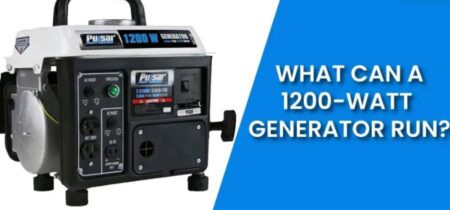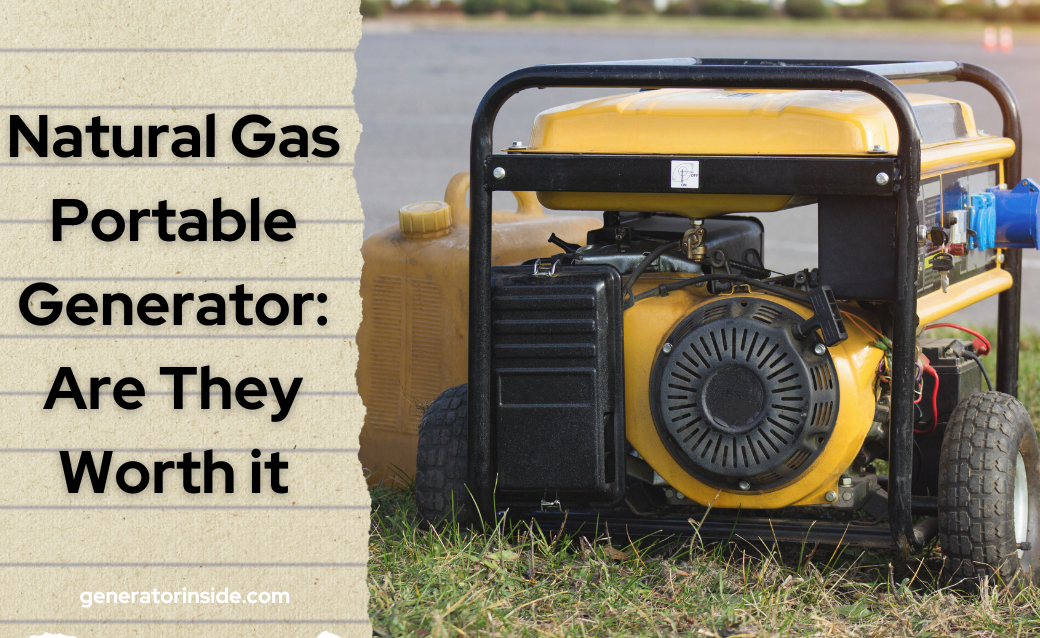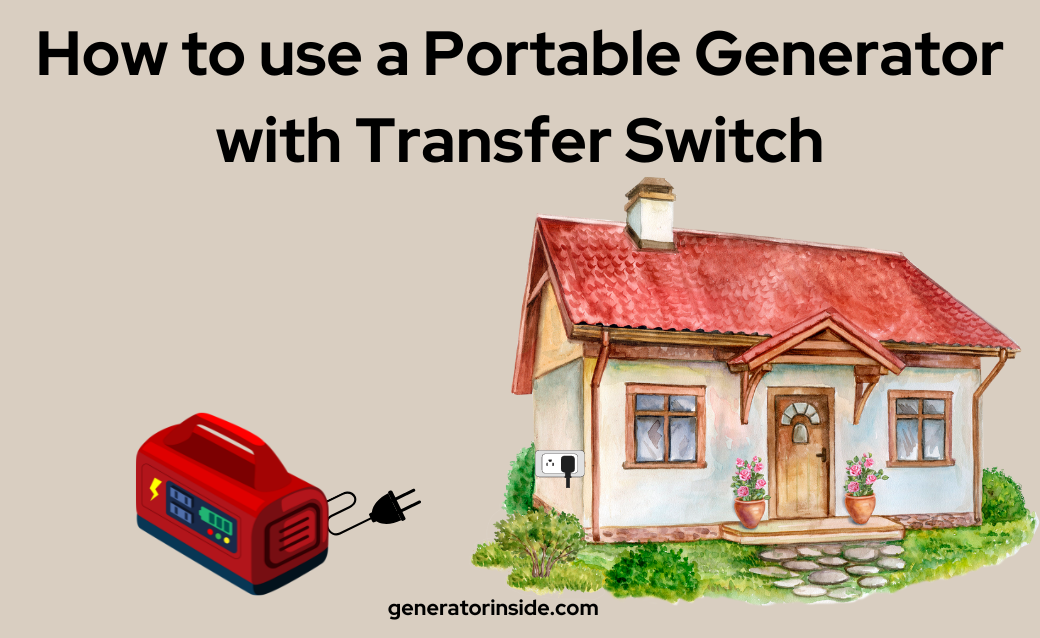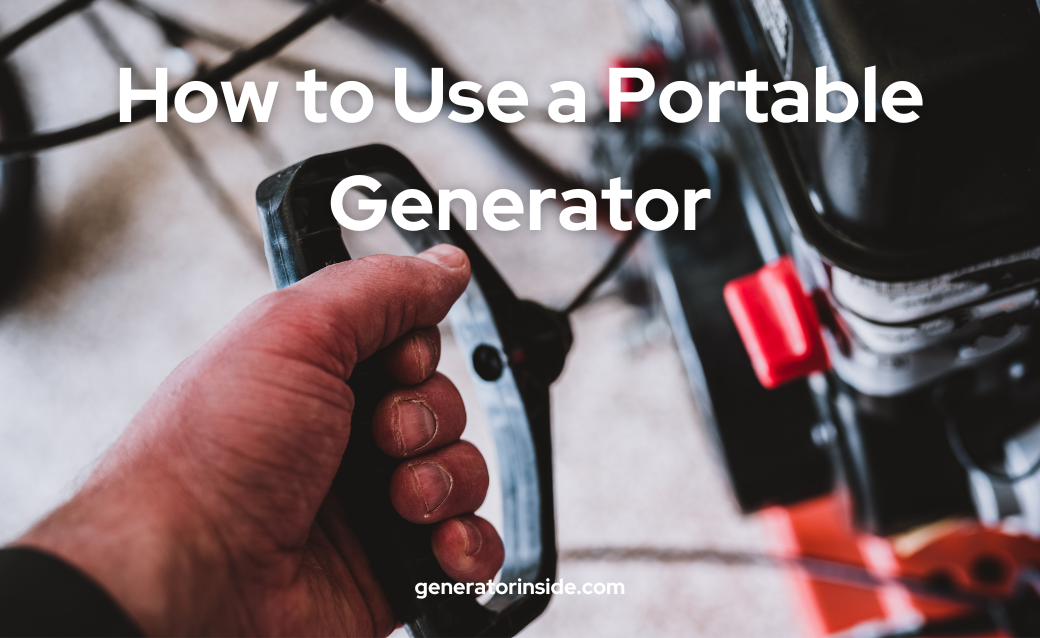
During a power outage, the one thing to note is the operation of your furnace so that comfort and safety are maintained.
As modern furnaces are equipped with electronic circuit boards, they require clean, pure sine wave power to function properly. A portable generator emerges as an effective solution—offers uninterrupted heating, ease of use, and reliable power supply, not just for the furnace but other essential home appliances too.
But do consider that these generators may not always provide the necessary clean power which can cause a risk of damage to the sensitive electronic components of the furnace. The high efficiency gas furnaces require a stable grounding system and the use of a portable generator may increase the risk of damaging the furnace’s control board of using a portable generator if not properly grounded. The fluctuating output voltage of many portable generators can be harmful to electronics and motor windings. So, for proper grounding, consult with an electrician for a safe and correct generator hookup.
How to Determine the Power Requirements of Your Furnace and The Generator
Consider the following to determine the power requirements of your furnace and the appropriate generator:
Determining Power Requirements of Your Furnace:
1. Furnace Wattage: The wattage needed by a furnace depends on its type, size, age, and specific components. Gas furnaces with smaller components typically require 300 to 700 watts for continuous operation. Electric furnaces with larger heating elements can consume 8,000 to 10,000 watts or more.
2. Starting and Running Watts: Furnaces require a surge of power (starting watts) to start, which can be significantly higher than the continuous operating watts (running watts). For instance, gas furnaces with smaller blowers need about 1000 to 1200 starting watts, whereas electric furnaces with larger elements require around 8,000 to 10,000 starting watts.
3. Blower Fan Power: The horsepower of the blower fan affects its power requirements. For example, a 1/8 HP fan needs 600-700 starting watts and 100-150 running watts, while a 1 HP fan requires 4700-4800 starting watts and 1500-1600 running watts.
4. Wattage Check: The simplest way to determine your furnace’s power requirement is to check the user manual or contact the manufacturer.
Selecting a Suitable Generator:
1. Furnace Wattage: The wattage requirement of the furnace is dependent on the particular type, size, age, and components of the system. Continuous operation of gas furnaces with small components usually requires 300-700 watts. Larger electric furnace heating elements can draw up to 12,000 watts.
2. Starting and Running Watts: Furnaces need a lot of power (starting watts) to get started and it can exceed the running watts required by them. To illustrate, gas-fired furnaces of less than one tonne size may demand between 1000 and 1200 starting watts; in contrast, electrical coil-heated furnaces of four tonnes magnitude could require up to 8,0.
3. Blower Fan Power: The capacity of the blow fan is determined by its horsepower which also determines the power it requires. For instance, a 1/8 HP fan uses around 600-700 starting watts and 100-150 running watts, whereas a 1 HP fan requires approximately 4700-4800 starting watts and 1.
4. Wattage Check: You may find that simple method of checking your furnace’s wattage/amp requirement by either referencing a user guide, or calling the furnace manufacturer.
Examples of Suitable Generators:
1. Small Portable Generators: Ideal for smaller furnaces with lower power needs, ranging from 1,000 to 3,000 watts.
2. Mid-Range Portable Generators: Suitable for larger furnaces, ranging from 3,000 to 7,000 watts.
3. Large Portable Generators: For large furnaces or multiple appliances, ranging from 7,000 to 10,000 watts.
4. Standby or Whole House Generators: These are connected to your home’s electrical system and are ideal for powering the entire house, including the furnace, during outages.
How to Install a Transfer Switch on Your Furnace
A transfer switch is a vital tool in allowing the safe use of the generator together with your heating system and other household facilities. It’s like a safety valve that bridges your residential wiring to your portable generator thus making sure that no circuit is in overdrive. For example, this feature is essential for heavy-duty equipment such as HVAC systems since it distributes the load between several circuits hence preventing safety issues such as backfeeding, electrocution, and damage to appliances.
If your generator exceeds 5KW, installation of a transfer switch is highly recommended. Additionally, it is a vital electrical code that has to be adhered to for security reasons. Still, setting up a transfer switch is complicated and may involve harm. This work should be done by a qualified electrician.
Charges by professional electricians usually range from $70-120 per hour with variations dependent upon the type of manual or automatic transfer switches and capacity of generators. It usually involves four hours, although in complicated situations it can take one day.
DIY installation should be done only by a person with substantial years in the electrical field and knowledge. This makes work with live terminals containing a significant amount of energy dangerous to handle. As such, if one is not highly skilled, it is safer to involve an expert.
Ensure you pick a suitable automatic or manual transfer switch capable of handling the required watts of your generator. While automatic, they are expensive compared to manual ones. They are cheaper than automated switches, but you must still toggle them yourself during blackouts. Getting different electricians’ price quotations is one way through which one can get a good bargain while also selecting the most appropriate wall plates.
Regular testing and maintenance of the transfer switch are essential to ensure its proper functioning. This involves periodically checking the connections and ensuring the switch operates smoothly between the power sources. It’s advisable to have your electrician demonstrate the testing process during installation and schedule regular maintenance checks to ensure ongoing safety and reliability.
How to Connect your Furnace to your Generator?
Make sure the main power supply to your house is disconnected before you start because safety is paramount. Backfeeding electricity into the grid is a dangerous phenomenon; hence this measure helps in protecting against it.
Select connection style and use extension cables to direct your connection. As a temporary measure, you can connect your furnace to a heavy-duty rated extension cord that matches its watts rating. Insert one end of the cord into the power supply then run it to the furnace after making sure that there are no tangles around and it won’t cause tripping.
Note: This method is not ideal for long-term use or larger furnaces.
Professional Setup Using a Transfer Switch:
A transfer switch offers a safer, more reliable connection for long-term use. Turn off the main power to your house and connect the generator to the transfer switch using the provided cables. Start the generator and flip the switch on the transfer switch from ‘Line’ to ‘Generator’. Your furnace will now draw power from the generator.
3. Generator Placement: Place the generator outdoors due to the risk of carbon monoxide emission. Ensure the generator is grounded properly using grounding rods.
4. Check Compatibility: The generator’s output must match your furnace’s power requirements (voltage, frequency, and phase).
5. Fuel and Maintenance: Keep the generator fueled and ready for use and regularly maintain both the generator and furnace for optimal performance.
Remember, while connecting a furnace to a generator is feasible, it should be done with caution. If you’re unsure about any step, it’s best to consult a professional.
Conclusion
It’s possible and necessary to connect an individual furnace with a portable generator during cases of power failures to ensure comfort and security. Nonetheless, you must be mindful of your furnace’s power needs as well as that of the generator. It is important to use a transfer switch for safety and efficiency reasons. You have to contact a qualified electrician regarding the safe mounting and connection of the generator; the device must be appropriate for your heating system. Both the furnace and the generator have to be maintained and tested regularly for reliable operation.
Frequently Asked Questions
1. How big of a generator is needed to run a furnace?
A minimum of 3,500 watts would be required to run either a gas or oil furnace, although a 5,000-watt generator would serve better, in case you are planning to operate other appliances too. Typically a generator with a starting wattage of 1800 – 2000 watts would be adequate for electric furnaces. As long as certain precautionary measures are taken, such as running the generator outdoors, it is safe to use a generator to power up a gas furnace.
2. Will a generator damage my furnace?
Generators can produce ‘dirty power’, which may include frequency and voltage variations, but this shouldn’t be an issue with occasional use. A generator can damage a furnace’s electrical components if it can’t provide the necessary power, particularly affecting the blower motor. Using an undersized generator can harm your furnace, so it’s important to ensure the generator has sufficient capacity.
3. Can you run an HVAC system with a generator?
To run an HVAC system, a whole-house generator of at least 17,000 watts is required. A portable generator can also run an HVAC system, as long as it’s the correct size to handle the load.














